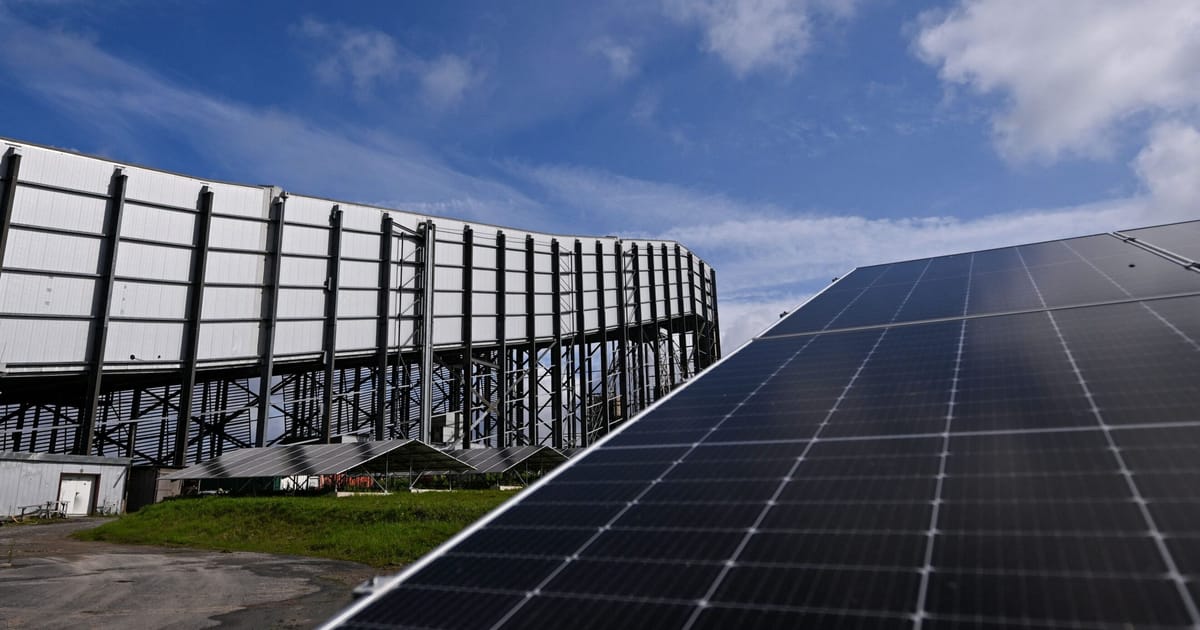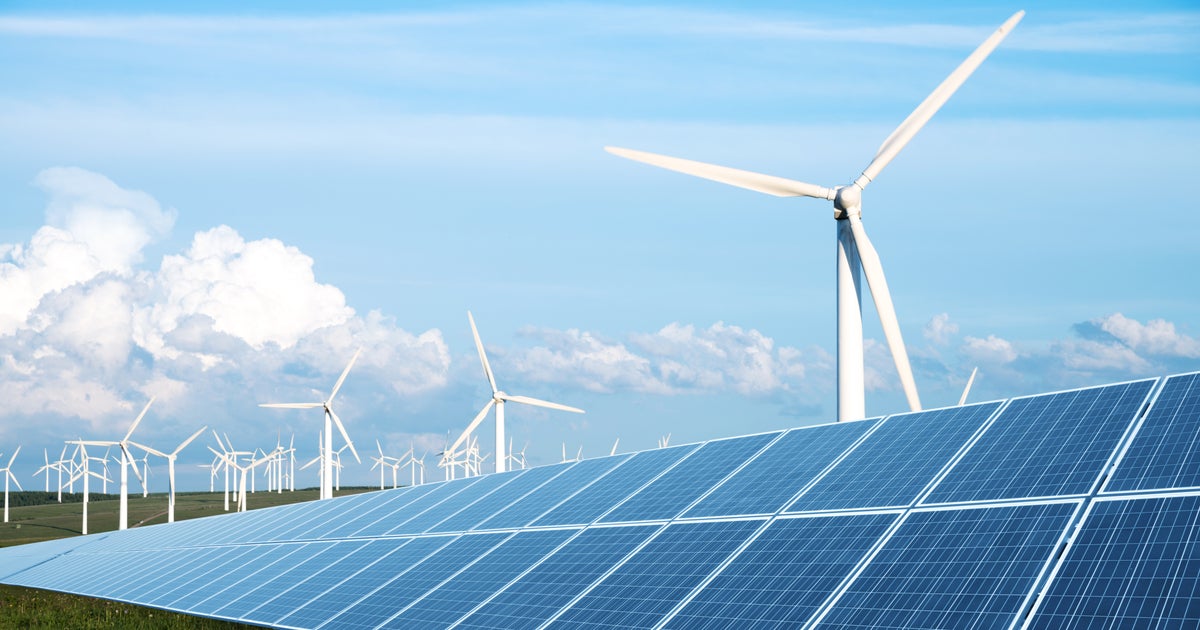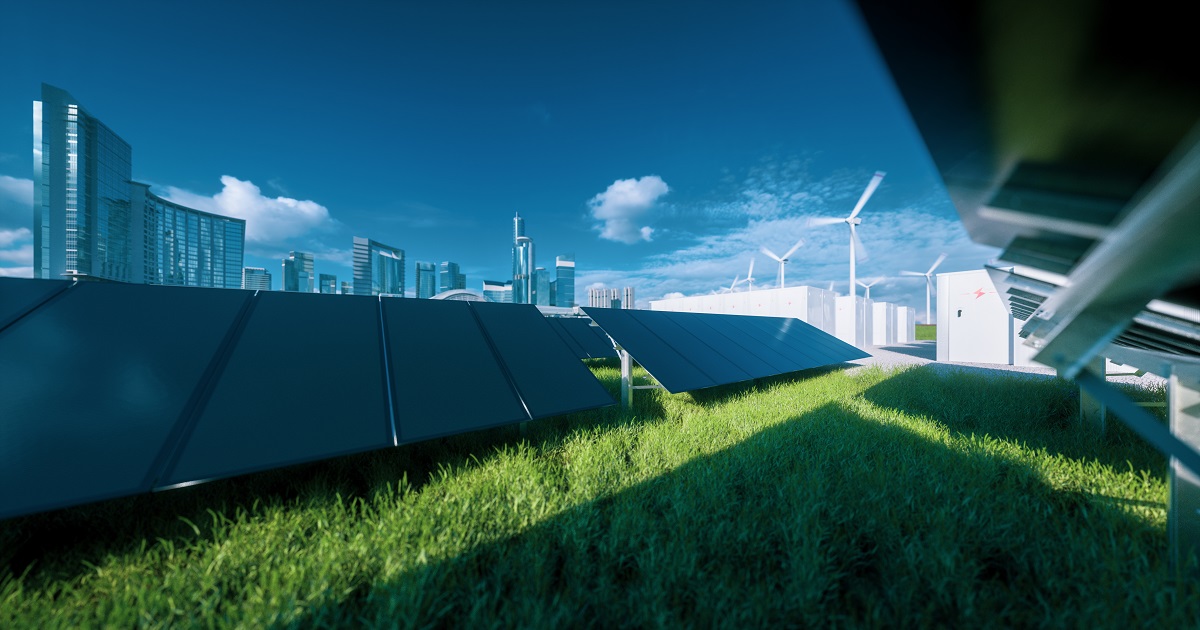Renewable Energy Tech: Powering the World ResponsiblyIn today’s dynamic world, understanding the global energy landscape is crucial. The way we generate and consume energy shapes not only our daily lives but also the future of the planet. As we embark on this exploration of renewable energy technology, we delve into a realm where innovation meets responsibility, where the choices we make today resonate for generations to come.
The Rise of Renewable Energy

A Brief Overview of Traditional Energy Sources
For decades, traditional energy sources such as coal, oil, and gas have been the backbone of global energy production. Yet, as we’ve reaped the benefits, the environmental toll has become impossible to ignore. Air pollution, habitat destruction, and the looming specter of climate change urge us to reevaluate our energy sources and consumption patterns.
The Environmental Drawbacks of Fossil Fuels
The environmental drawbacks of fossil fuels are glaring. The combustion of coal and oil releases greenhouse gases, contributing to the warming of our planet. Oil spills disrupt marine ecosystems, and air pollution poses a threat to human health. It’s a complex web of consequences that demands a paradigm shift.
The Paradigm Shift: Embracing Renewable Energy
Welcome to the age of renewable energy – a transformative paradigm shift fueled by a steadfast commitment to a cleaner, more sustainable future. Embracing renewable energy sources not only serves as a formidable force against environmental challenges but also unlocks the gateway to pioneering technologies and unprecedented economic opportunities. This transition represents a collective stride towards a harmonious coexistence with our planet, where innovation converges with responsibility to reshape the landscape of our energy consumption and foster a brighter, more sustainable tomorrow.
Solar Power Solutions

Solar power stands at the forefront of the green energy revolution, leveraging the inexhaustible power of the sun. Solar panels, equipped with photovoltaic cells, play a pivotal role by converting sunlight into electricity through a surprisingly simple yet transformative process. This innovation not only provides a clean and abundant energy source but also aligns with the imperative for sustainable practices.
The journey of solar power doesn’t conclude with this fundamental concept; it extends into the realm of continuous innovation in photovoltaic technology. Ongoing advancements strive to enhance efficiency and accessibility. Flexible solar cells, capable of integration into various surfaces, represent just one facet of progress. Breakthroughs in energy storage further bolster the reliability and practicality of solar solutions.
Zooming out from individual panels, solar farms come into focus — expansive landscapes adorned with countless solar arrays silently absorbing sunlight. These large-scale installations not only contribute significantly to the renewable energy grid but also serve as symbolic landmarks, reflecting humanity’s collective commitment to a sustainable and eco-conscious future. They exemplify the harmonious integration of technology and nature, providing a glimpse into a future where clean energy plays a pivotal role in shaping a greener world.
Wind Energy Innovations

The Mechanics of Wind Turbines
Another player in the renewable energy orchestra is wind power, captured through the elegant mechanics of wind turbines. As the wind turns the blades, kinetic energy transforms into electrical power, showcasing the synergy between nature and technology.
Offshore Wind Farms: Tapping into the Power of the Sea
Venturing into the open sea, offshore wind farms harness the consistent and powerful winds, overcoming limitations faced by onshore counterparts. These offshore installations not only generate substantial energy but also highlight the potential of utilizing vast expanses of untapped resources.
Overcoming Challenges: The Future of Wind Energy
Yet, wind energy faces challenges, from addressing intermittency issues to minimizing its impact on local ecosystems. The future of wind energy lies in innovative solutions, from advanced turbine designs to artificial intelligence-driven management systems that optimize energy production.
Hydroelectric Power
Utilizing Flowing Water for Clean Energy
Enter the world of hydroelectric power, where the flow of water becomes a source of clean energy. Dams and turbines convert the kinetic energy of flowing water into electricity, providing a reliable and renewable power source.
Dam Technologies: Balancing Energy Production and Environmental Impact
As we build dams to harness water’s power, we must navigate the delicate balance between energy production and environmental impact. Innovative dam technologies aim to minimize ecological disruption, ensuring that the benefits of hydroelectric power outweigh its costs.
Micro-Hydroelectric Systems: Small-Scale Solutions with Big Impact
Scaling down, micro-hydroelectric systems emerge as decentralized solutions, providing clean energy to local communities. These small-scale systems not only generate power but also empower communities to take control of their energy needs.
Geothermal Energy Exploration
Venturing beneath the Earth’s surface unveils the captivating realm of geothermal power, a revolutionary energy source that harnesses the planet’s internal heat. Unlike conventional energy forms, geothermal power has the potential to offer a comprehensive suite of solutions, encompassing electricity generation, heating, and cooling, all sourced from the Earth’s intrinsic warmth.
At the forefront of geothermal power are geothermal plants, exemplifying the scalability and sustainability of this energy variant. These plants tap into subterranean reservoirs of hot water and steam, channeling the Earth’s latent thermal energy into electricity. This process contributes significantly to the diversification of our energy portfolio, paving the way for a more sustainable and environmentally friendly future.
On a more localized scale, geothermal heating and cooling systems bring the benefits of this energy source directly into homes. These innovative systems circulate fluid through underground pipes, taking advantage of the Earth’s stable temperature to efficiently regulate indoor climates. Whether extracting warmth during winter or providing cooling relief in summer, these systems showcase the adaptability and versatility of geothermal energy in meeting the diverse needs of residential spaces.
Geothermal power stands as a testament to our ability to tap into the Earth’s natural resources responsibly. It not only offers a viable alternative to traditional energy sources but also exemplifies how harmonizing technological advancements with the planet’s inherent capabilities can lead us toward a more sustainable and ecologically balanced future.
Biomass and Bioenergy
Converting Organic Matter into Energy
Turning our attention to biomass and bioenergy, we explore the transformative process of converting organic matter into a valuable energy resource. From agricultural residues to dedicated energy crops, this approach represents a sustainable and circular approach to energy production.
Biogas Production: Turning Waste into Power
Within the realm of bioenergy, biogas production stands out. Through anaerobic digestion, organic waste is transformed into biogas, a renewable fuel that can be used for electricity generation and heating, showcasing the potential of turning waste into a valuable resource.
The Role of Bioenergy in Carbon Neutrality
Perhaps the most intriguing aspect of bioenergy lies in its potential for carbon neutrality. The cycle of growth, combustion, and regrowth creates a closed loop, minimizing the net carbon impact on the environment and presenting a unique solution to climate change.
Innovations in Energy Storage
The Challenge of Intermittency: Why Energy Storage Matters
Renewable energy sources, while abundant, often face the challenge of intermittency. Energy storage solutions play a pivotal role in addressing this challenge, providing a means to store excess energy when it’s abundant and release it when demand is high.
Battery Technologies: Beyond Lithium-Ion
The evolution of battery technologies is a key driver in enhancing energy storage capabilities. From the familiar lithium-ion batteries to emerging technologies like solid-state batteries, innovation in this space is unlocking new levels of efficiency and reliability.
Pumped Hydro Storage and Other Creative Solutions
Beyond batteries, pumped hydro storage emerges as a creative solution. This process involves using excess energy to pump water to a higher elevation, creating a reservoir that becomes a potent source of energy when needed. Creative solutions like these redefine our approach to energy storage.
Smart Grids and Energy Management
The Evolution of Power Distribution Systems
Traditional power grids are undergoing a transformation into smart grids. These intelligent systems leverage digital technology to optimize energy distribution, enhancing efficiency, and accommodating the integration of renewable energy sources seamlessly.
How Smart Grids Enhance Efficiency and Reliability
The introduction of smart grids represents a leap forward in the efficiency and reliability of power distribution. Real-time monitoring, adaptive management, and the ability to respond dynamically to demand ensure that energy is used wisely and wastage is minimized.
Integrating Renewable Energy into Existing Grids
Yet, integrating renewable energy into existing grids is no small feat. It requires a careful reevaluation of infrastructure, the implementation of advanced control systems, and a commitment to fostering a grid that can adapt to the evolving energy landscape.
Government Initiatives and Policies
The Role of Governments in Promoting Renewable Energy
Governments worldwide play a pivotal role in charting the course towards renewable energy. Their influence extends through policies, regulations, and incentives, creating an environment conducive to sustainable practices. By fostering a commitment to a greener future, these governance measures propel the transition to cleaner energy sources. Through strategic initiatives, governments not only address environmental concerns but also stimulate the growth of renewable energy industries, signaling a global dedication to a more sustainable and eco-conscious trajectory.
Incentives and Subsidies: Encouraging Green Practices
Incentivizing the adoption of renewable energy, governments often provide subsidies and tax benefits. These financial incentives not only ease the transition for businesses and individuals but also demonstrate a collective commitment to nurturing green practices.
Global Agreements and Commitments for a Sustainable Future
On the global stage, agreements like the Paris Agreement underscore the urgency and importance of collective action. These international accords set the stage for collaborative efforts in achieving a sustainable and renewable energy-driven future, transcending national boundaries for a shared goal.
Corporate Responsibility in Energy

How Businesses Are Embracing Renewable Energy
In the corporate realm, businesses are increasingly recognizing the symbiotic relationship between success and sustainability. Embracing renewable energy, companies are not only reducing their environmental footprint but also positioning themselves as leaders in a world that values responsible business practices.
Corporate Social Responsibility: Beyond Profitability
Corporate social responsibility (CSR) has evolved beyond a mere buzzword. It now encompasses a genuine commitment to environmental stewardship. Companies are weaving sustainability into their core values, transcending profitability to contribute positively to society and the planet.
Case Studies of Companies Leading the Green Revolution
Examining case studies of companies leading the green revolution provides valuable insights. From tech giants investing in renewable energy projects to small enterprises adopting eco-friendly practices, these cases demonstrate the diverse strategies employed in making sustainability a central tenet of business operations.
Conclusion
As we conclude our exploration into the vast realm of renewable energy technology, the vision of a sustainable tomorrow comes into focus. The trajectory is clear – a future powered by innovation, responsibility, and a collective commitment to safeguarding our planet. Yet, the narrative doesn’t end here. Empowering individuals to support renewable energy becomes a call to action. Whether through conscious consumer choices, advocacy for policy changes, or embracing renewable technologies in our daily lives, each person becomes a protagonist in this narrative, contributing to the creation of a greener, more sustainable world.
Frequently Asked Questions (FAQ) – “Renewable Energy Tech: Powering the World Responsibly”
What is the main focus of the blog post?
The blog post delves into the expansive realm of renewable energy technology, exploring its various facets, from solar and wind power solutions to innovations in energy storage and the role of governments and corporations in promoting sustainability.
Why is the shift to renewable energy emphasized?
The emphasis on the shift to renewable energy stems from the environmental drawbacks associated with traditional energy sources like fossil fuels. The blog underscores the need for cleaner, sustainable alternatives to mitigate climate change and reduce environmental impact.
How does solar power work, and what advancements are highlighted?
The solar power section explains the working of solar panels, converting sunlight into electricity. Advancements discussed include evolving photovoltaic technology, such as flexible solar cells, and the glimpse into large-scale solar energy production through solar farms.
What role do wind turbines play in renewable energy?
Wind turbines are explored in the context of wind energy innovations. The section covers the mechanics of wind turbines, offshore wind farms tapping into sea winds, and the challenges and future potential of wind energy.
How does hydroelectric power contribute to renewable energy?
Hydroelectric power utilizes flowing water to generate clean energy. The blog discusses the workings of dams and turbines, innovative dam technologies to balance energy production and environmental impact, and the impact of micro-hydroelectric systems on local communities.
What does geothermal energy exploration involve?
Geothermal energy exploration taps into the Earth’s heat for sustainable power. The blog explores geothermal plants, their contribution to sustainable energy, and how geothermal heating and cooling systems offer versatile solutions for homes.
What is the significance of biomass and bioenergy in the renewable energy landscape?
Biomass and bioenergy involve converting organic matter into energy. The blog explains the process, highlighting biogas production from organic waste and the role of bioenergy in achieving carbon neutrality.
How are innovations in energy storage addressed?
The section on innovations in energy storage tackles the challenge of intermittency in renewable sources. It covers the importance of energy storage, advancements in battery technologies beyond lithium-ion, and creative solutions like pumped hydro storage.
What is the role of smart grids and energy management in the renewable energy transition?
Smart grids and energy management are discussed in the context of evolving power distribution systems. The blog explores how smart grids enhance efficiency and reliability and the challenges and strategies for integrating renewable energy into existing grids.
How do government initiatives and policies contribute to renewable energy adoption?
Government initiatives and policies play a crucial role in promoting renewable energy. The blog examines the role of governments in creating a conducive environment, the impact of incentives and subsidies, and global agreements for a sustainable future.
How are businesses embracing renewable energy and corporate social responsibility?
The section on corporate responsibility in energy explores how businesses are integrating renewable energy into their operations. It touches on corporate social responsibility beyond profitability and includes case studies of companies leading the green revolution.
What is the main takeaway from the blog post?
The main takeaway is a vision of a sustainable tomorrow powered by innovation, responsibility, and a collective commitment to renewable energy. The blog encourages individuals to support this vision through conscious choices, advocacy, and embracing renewable technologies in their daily lives.
Stay Tuned On Our Content
If you’re fascinated by the advancements in renewable energy technology, you’ll likely find our post on Eco-Friendly Gadgets: The Rise of Sustainable Tech intriguing. Discover the latest innovations in sustainable technology, from eco-friendly gadgets to cutting-edge solutions that are reshaping the landscape of green living. Dive into the world of sustainability and explore how technology is driving positive change.
In the spirit of making a positive impact, check out the insightful article on You Have the Power to Make the World a Better Place. This thought-provoking piece offers inspiration and practical tips on how individuals can contribute to making the world a better place and a better world. From personal choices to community engagement, the article explores the various avenues through which each of us can play a role in creating a more sustainable and compassionate world.




Os comentários estão encerrado.